

History of Lonseal’s sheet waterproofing method
-
- 1
- Sheet waterproofing of Lonseal was adopted for the roofs of Japan National Railways in 1952 for its high waterproof and fireproof performance, following the former Japan National Railways’ "Sakuragicho Accident" caused by a fire breakout from a pantograph.
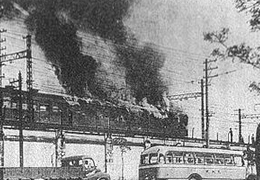
Scene of the Sakuragicho Accident 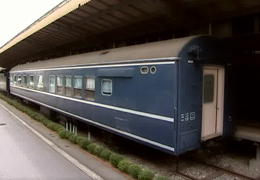
Lonleum adopted for roofs of the railway vehicle -
- 2
- The polyvinyl chloride sheet was adopted for buildings for the first time in 1957 and its construction method and specifications were established, allowing it to become widespread as a waterproof sheet for buildings.

Scene of a technical lecture in around 1965 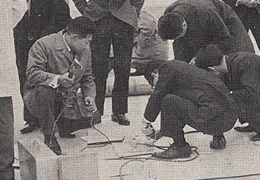
Scene of a technical lecture in around 1965
-
- 3
- At the Osaka Expo held in 1970, it was adopted for Hitachi Pavilion and attracted attentions as one of the latest building material of the time.
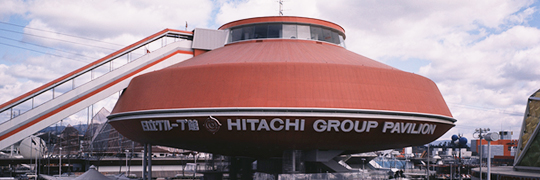
Osaka Expo/Hitachi Pavilion -
- 4
- A mechanical fixation method suitable for renovation construction methods was established in 1964. Moreover, it was developed into the waterproof technology for pools which required high waterproof performance.
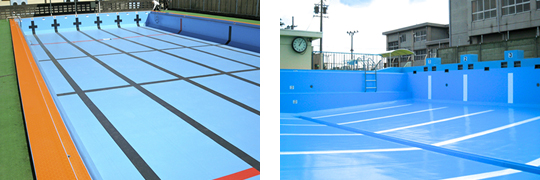
Pool waterproof specifications
To environment-responsive waterproofing
-
Now that our technologies have been developed, our development is not limited to waterproofing. We have developed Longreen based on the roof greening technology and the high solar reflectance sheet "Best-proof Shanetsu" using the first thermal insulation technology for the sheet waterproof material.
To encourage energy saving of the entire building, we established the "solar panel installation construction method" applicable to solar power generation, which is widely used in recent years. Now, we are continuing to grow as the leading company of environment-friendly building waterproofing such as "FPIS roof," which can improve the thermal insulation performance furthermore.
Thermal insulation waterproof technology
-
Lonseal succeeded in its commercialization for the first time in the industry in 2004
and established it as a waterproofing construction methodWe developed the thermal insulation sheet waterproofing with high thermal insulation performance by adding thermal insulation performance to the Lonseal waterproof sheets, "Best-proof" and "Lonproof Ace," which have the established reputation for their waterproof performance. The unique technology drastically improves the solar reflectance rate and secures a high solar reflectance rate even with a gray color, which is difficult to keep thermal insulation performance.
It reduces the temperature applied to roofing, and therefore drastically improves the durability compared with general roofing. It contributes to the extension of the renovation cycles of buildings and the reduction of the life cycle costs. We have a long-term waterproof guaranteed system which realizes up to 15 years of waterproof guarantee by this technology.
-

Roof greening
-
Roof waterproof system to produces environment-friendly roof greening
With our tie-ups with planting manufacturers, we can propose various systems from full-scale soil greening, which is applicable even to high trees, to maintenance-saving greening of lawn and sedum.
The absolute requirements for roof greening is the usage of a waterproof sheet that is durable enough to prevent intrusion and penetration of plant roots. Lonseal waterproof sheets have high root resistance and are suitable for roof greening. -

Solar panel installation construction method
-
Waterproof system applicable to the installation of solar panels
We established the "solar panel installation construction method" for installing solar panels simultaneously with waterproof construction. The three support frames with different characteristics, such as exterior thermal insulation construction method, maintenance, and cost performance, support the installation of solar panels.
-
